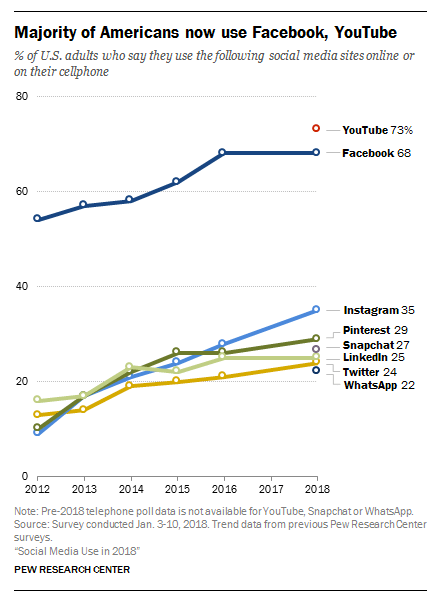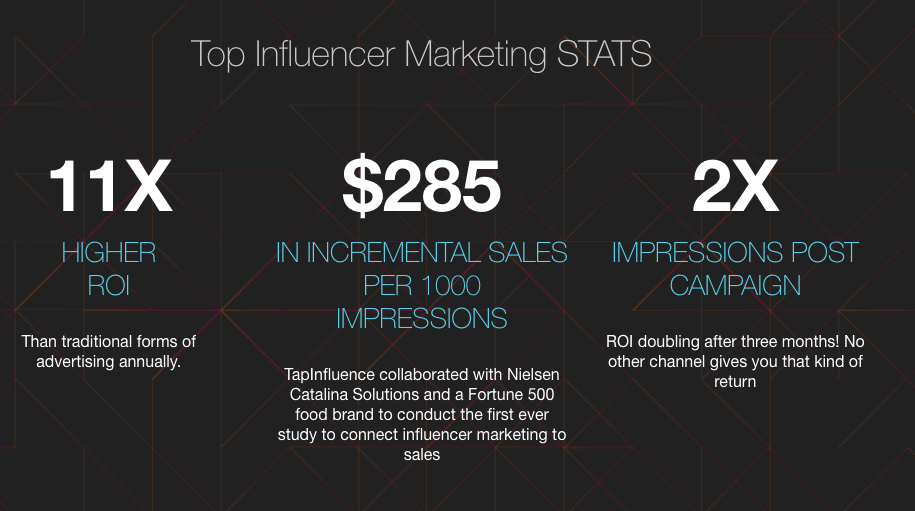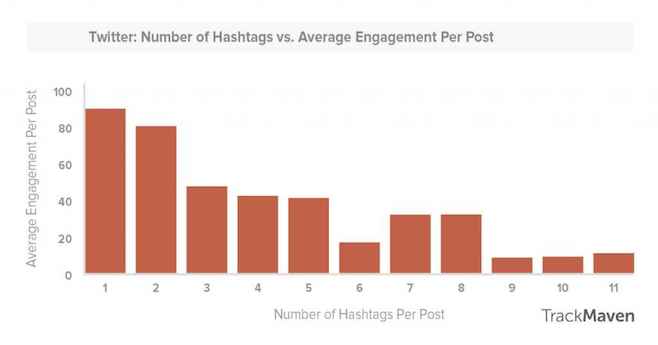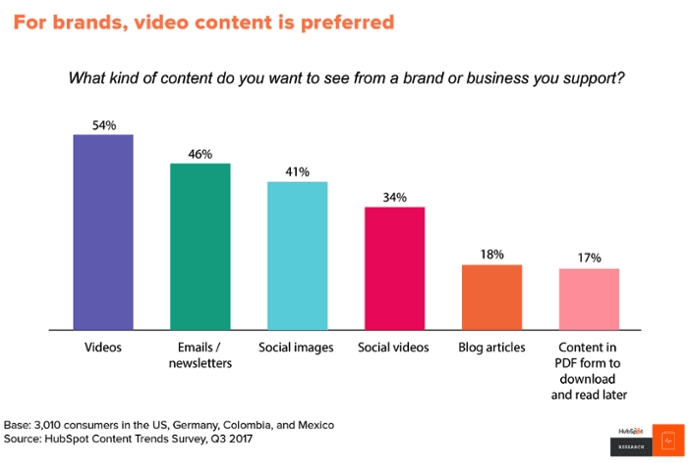Social media marketing isn’t just about pushing out content and keeping the lights on. Your company must go above and beyond to showcase your brand in an authentic and engaging way. And while “engagement” is a word that’s constantly thrown around, many brands don’t know how to achieve it organically — especially in the face of algorithm changes that affect organic reach.
That’s why organic growth won’t happen overnight. Change isn’t as simple as a post going viral — it takes time. But when you use that time effectively, you can create some of the most loyal customers your B2B brand has ever seen.
Here are nine ways to effectively find, engage and grow your audience organically on social media.
1. Get to know your audience
This is the most important step before implementing any type of best practice or campaign in your social media strategy. Without understanding your target audience, you won’t know the channels they utilize, their interests, the websites they visit, etc. This insight will open doors to the content your audience enjoys, and the messaging that will spring them into action.

Start with existing data from sources like Pew Research Center, Facebook Audience Insights and Smart Insights. Additionally, advanced social listening tools will pull deep analytics on social networks, the internet and its users. You also can look at your competitors; research and partner with industry leaders; and utilize hashtags (you’ll learn more about these topics later in this post) to learn more about your audience. Once you feel like you’ve gained a full understanding, you can create social media content that truly resonates with an engaged audience.
2. Work with influencers
Partnering with the right industry influencers is one of the most effective ways to organically grow an engaged social media audience. Why? Because it’s the highest form of word-of-mouth. Your brand is now front-and-center for the influencer’s dedicated, loyal and engaged followers to discover.

So how do you effectively utilize influencers on social media? It could be as simple as sharing their content and tagging them on your platform. Or it could be more grandiose, with influencers hired to promote your brand’s products, services or campaigns.
Before you start looking for the right influencer, you must first define the goals and expectations of this collaboration. Next, focus on the three Rs of influence: relevance, reach and resonance.
- Your audience must trust and respect the influencer you choose, so it’s crucial that they share a creative vision, tone, values and content that are relevant to your audience and your brand.
- You also want to ensure the reach of your influencer’s following will hold value to your business. That doesn’t necessarily equate to the person with the most followers; a huge follower count is meaningless if those people aren’t interested in what your business offers.
- Micro-influencers in niche industries have become very popular in the past year, especially in B2B, because of their ability to resonate. A Markerly analysis found that Instagram influencers with fewer than 1,000 followers actually hold the greatest influence. This stronger sense of comradery is rooted in people coming together around a common interest.
Influencer marketing is all about quality vs. quantity, and when done effectively, it adds a loyal and dedicated group to your audience.
3. Stalk your competitors
What better way to reach your audience than through your competitors? Monitoring competitors can give you insight on the content they’re sharing, which industry leaders they’re interacting with, what social platforms they’re investing most of their time in and, most importantly, who is following them. You can see what’s working — and not working — before testing it on your own networks.
You also can monitor your competitors straight from some social network platforms. Add competitors to your Pages to Watch section of insights on Facebook, create Twitter Lists and use LinkedIn’s competitor analysis tool. For the most in-depth analysis on every social network, invest in a third-party social listening tool (e.g., Sprout Social, Hubspot, Oktopost).
Tracking these statistics allows you to compare your engagement and posts with that of your competitors to help you continuously improve and optimize your brand’s organic social strategy. Harness that competitive spirit to influence your benchmarking and goal setting.
4. Identify the best times to post
Optimal social media posting times are difficult to pinpoint; they’re constantly changing and truly depend on your unique audience. However, existing data can be a helpful starting point. According to Sprout Social’s data, here are the best times to post on each network:
- LinkedIn:
- 3 to 5 p.m. Wednesdays
- You can also see great engagement any time Tuesday through Thursday.
- Facebook:
- Noon and 2 p.m. Wednesdays
- 1 to 2 p.m. Thursdays
- It’s also generally safe to post from 10 a.m. to 3 p.m. on weekdays.
- Twitter:
- 9 to 10 a.m. Fridays
- It’s also safe to post from 10 a.m. to noon daily.
- Instagram:
- 3 p.m. Wednesdays
- 5 and 11 a.m., and 3 to 4 p.m. Thursdays
- 5 a.m. Fridays
- It’s also safe to post between 9 a.m. and 6 p.m. Tuesday through Friday.
What about the best times to post for specific industries? (After all, an engineer may not have the same work hours as a seller.) Luckily, Sprout Social includes some of those numbers here. If you also want to post when your followers are most active, use Followerwonk to find this data.

Considering all of these factors, it’s crucial to test and optimize to find what works best for organic audience growth. Use the research data as a starting point and fine-tune as you go.
5. Use hashtags effectively
Hashtags lend your brand the ability to help people focus in on the important keywords they care about on a global scale. It’s crucial to utilize hashtags effectively in order to elevate your brand’s content from the saturation and expand your reach to new followers.
Hashtags should be a given on every network except Facebook unless it’s used for a branded campaign or event. As a starting point, check out what’s trending on Twitter, Instagram and LinkedIn. Some other recommended third-party research tools include:
- Buzzsumo (paid)
- Keyhole.co (paid)
- All-Hashtag (free)
Beyond focusing on keyword hashtags, you can take advantage of social media hashtag holidays. Some holidays may be irrelevant to your brand, but others could provide valuable opportunities for fun and entertaining content around trending topics or an important movement. You can download a calendar of these from Hubspot here.

Twitter Chats also can be used to engage your hashtag-friendly audience. Led by a designated monitor at a set time, these public chats let users share a discussion around a particular topic using a unique hashtag. Their very nature allows thousands of new people to organically learn about your brand each time you host a Twitter Chat. It can become a habit for your followers to tune in regularly, making it one of the best ways to turn participants into ready-made brand advocates.
Although you have endless options when it comes to hashtags, it’s critical to know that less is more. According to a recent TrackMaven report, the fewer hashtags you use on a post, the better engagement you get (with the exception of Instagram). Read the report on Social Media Today to learn more about the optimal number of hashtags, and the best hashtag length for improved post performance.


No matter what best practice you use, hashtags can help your brand participate in and lead important conversations, stand out among millions of posts, increase organic engagement and more.
6. Create questions and polls
Twitter Chats aren’t the only way to pose questions to new and current followers; Twitter, Facebook and Instagram also allow you to post specific polls and questions. Although LinkedIn and Pinterest don’t have specific features to create a poll, you still can ask open-ended questions. Formatting your posts this way shows that you want to hear from your followers and care about their opinions.
Not only do questions and polls provide another avenue for your audience to engage with your content, it’s a way to gauge their interests, behaviors and areas of activity. They also add variety to a social media landscape where posts often can become repetitive.
7. Create contests and incentives
People like to play games, compete and, most importantly, win — especially if there’s a prize involved. They also like to share their own memories and content (that’s literally why social media was invented). So what better way to satisfy your customers than a contest where they can compete, share their own content and win?
Contests no longer are exclusive to B2C companies, and there are many ways B2B brands can take advantage of this marketing strategy. Photo, video, user-generated, or caption contests all are great ways to bring out the competitive side of your audience. Prizes can range from large (free long-term subscription to your services or a free product) to small (discount and offers — 72 percent of consumers want discounts or sales on social media).
However you come up with contests and incentives, make sure they meet your company’s goals and provide value to your audience. When your content — and contests — speak to what your audience wants, people will organically gravitate toward your brand.
8. PR
PR and social media share a common goal: to meet audiences where they are in order to participate in and shape online conversations. They must work hand-in-hand, because together they find, engage and grow your audience.
A major part of PR focuses on getting your brand into high-tier media publications, and the vast majority of those publications, journalists and writers are on social media. Sharing media placements on social is essential to building and strengthening your relationship with these industry leaders. These types of partnerships also further the reach of your industry-leading content. With 62 percent of people getting their news from social media, placements are a huge way to fill your social feed with timely articles that will bring in new followers and engagement.

When you bring PR and social media together, you create the perfect pairing to organically grow your brand.
9. Don’t forget to share great original content
Great content is at the heart of social media. If you don’t have great content to share, you can’t provide the quality your audience expects. But don’t just push out promotional content, or people won’t see you as an authentic brand.
So what makes for great content? That depends on how you want to express your brand, and what your audience is interested in. Start by looking at your social media insights for the topics and content already getting the most engagement.
There are certain types of content that naturally boost your organic reach and engagement: video and images. According to Hubspot, visual content is more than 40 times likelier to be shared on social media than other types of content. According to Sprout Social’s 2018 Index report, 59 percent of social media users want a post that teaches them something, and 56 percent want posts that entertain. Creating videos and images that align with those interests are a recipe for success.

Creating your own high-quality content allows your company to show your audience what you represent and your industry expertise. And when your audience has something to gain, whether it be knowledge or entertainment, your relationship strengthens and they’ll keep coming back for more.
Final thoughts
The process of finding, engaging and growing an organic audience on social media can sometimes feel like you’re shouting into a dark, bottomless hole. But there are many ways to make organic social media work for your B2B brand. Success could take one strategy, or it could be found in a combination; don’t get discouraged if your first attempt isn’t a complete slam dunk.
Whether you’re working with influencers or running a contest, your focus should always be on honest engagement with your users. The more relevant the content, the more people will see your content — and the more organic growth your social media presence will experience.
If you’re not sure where to begin, we can help. Reach out to find the best ways to optimize your organic social media strategy.


